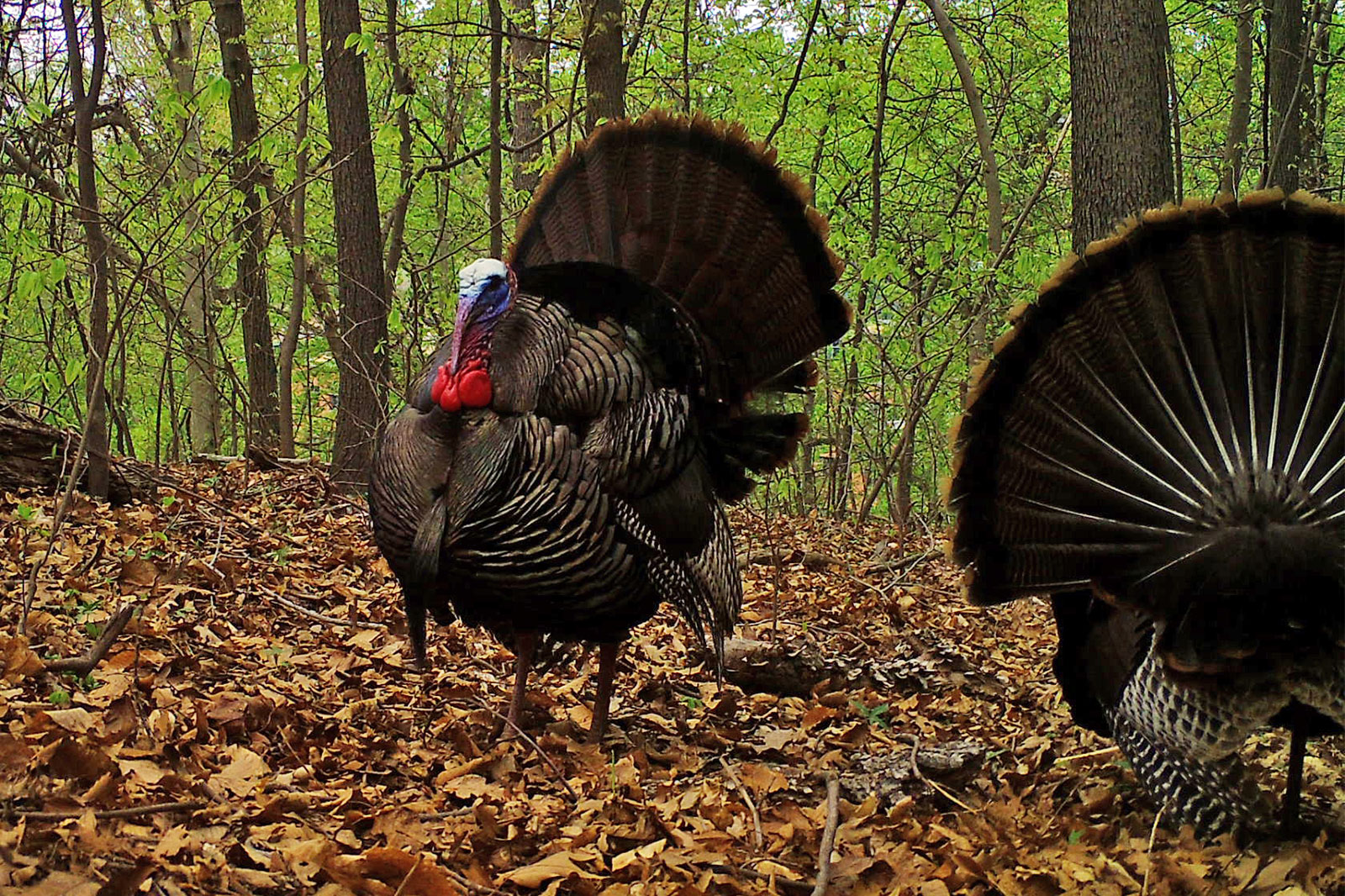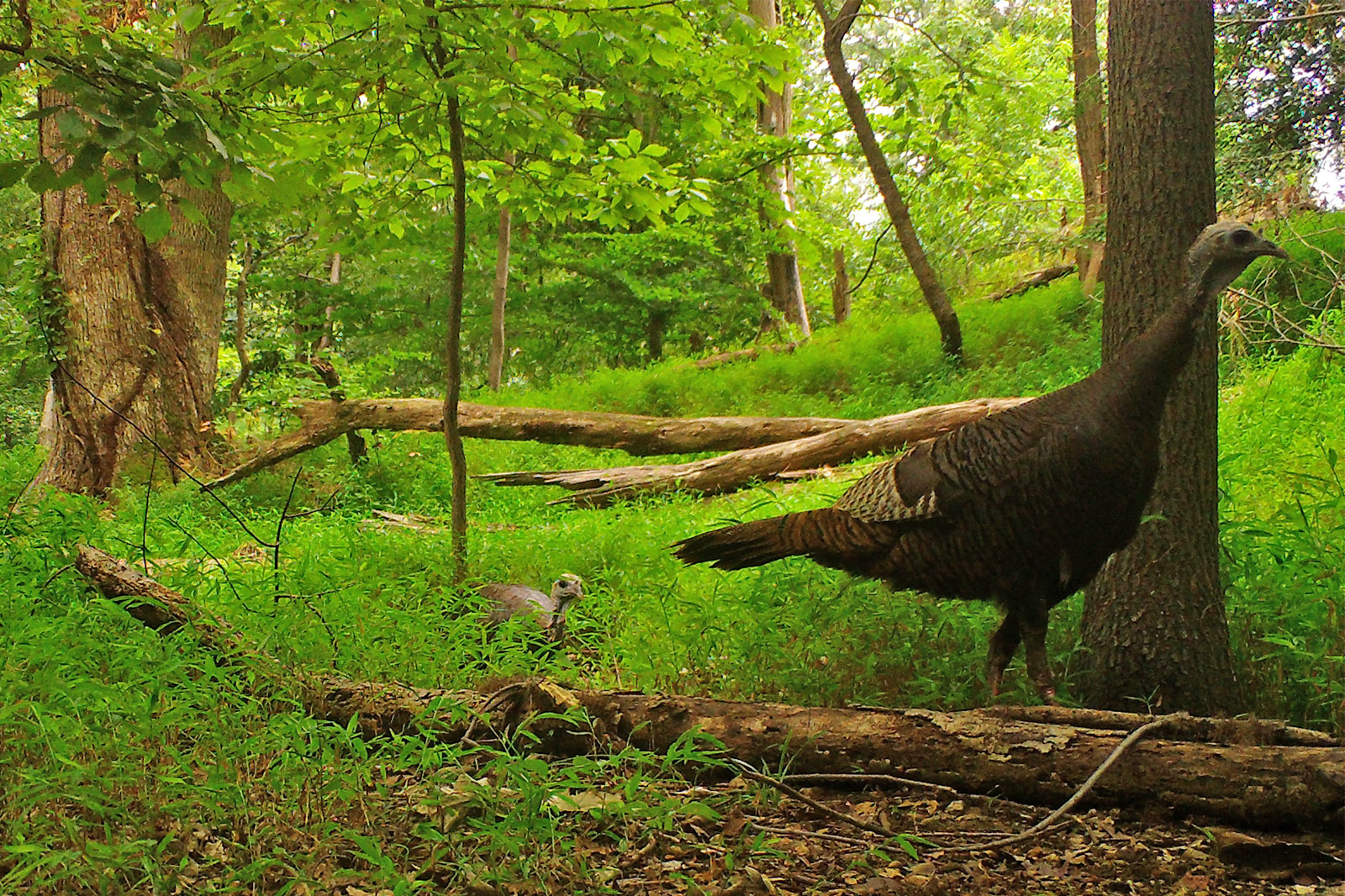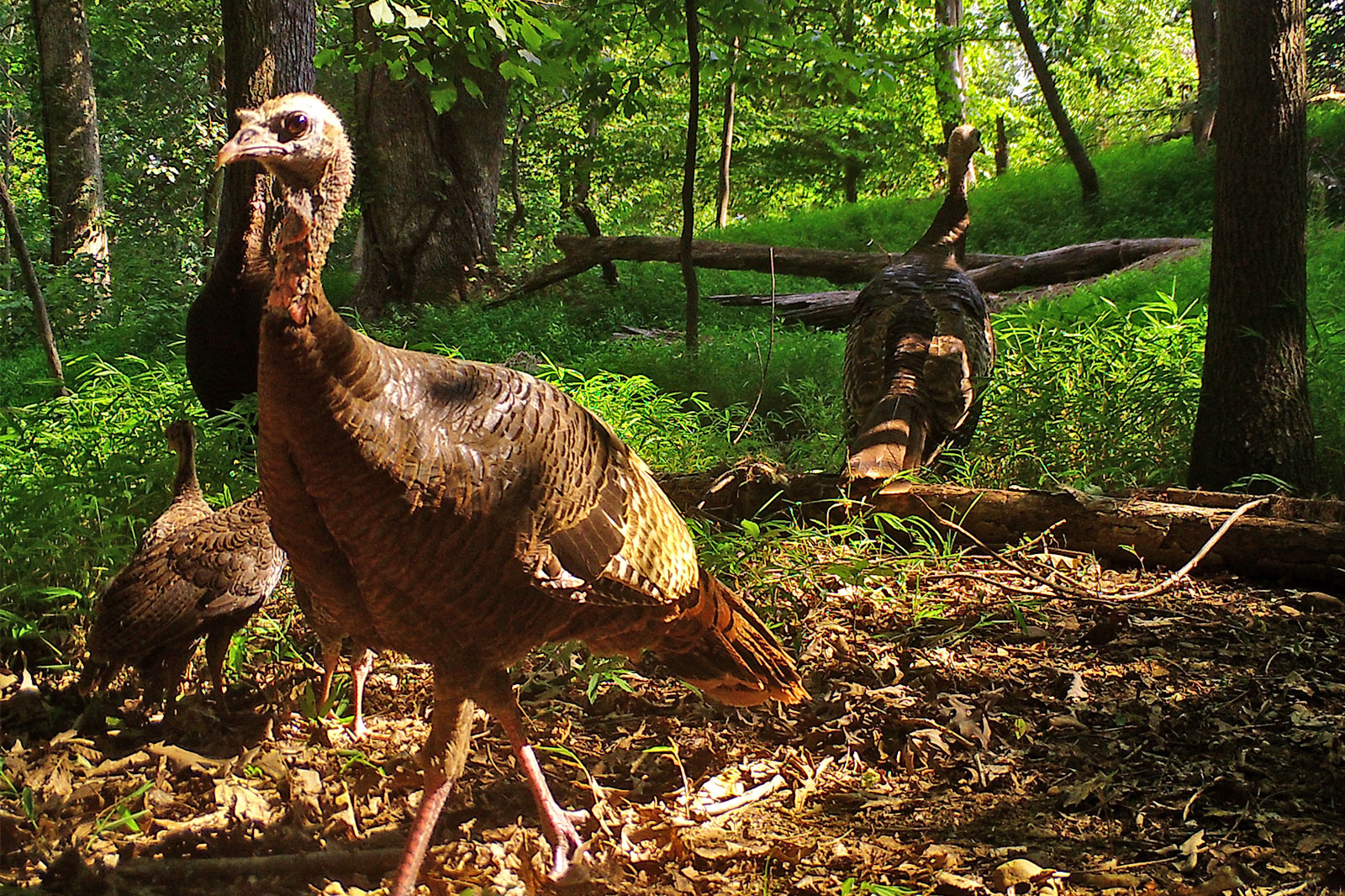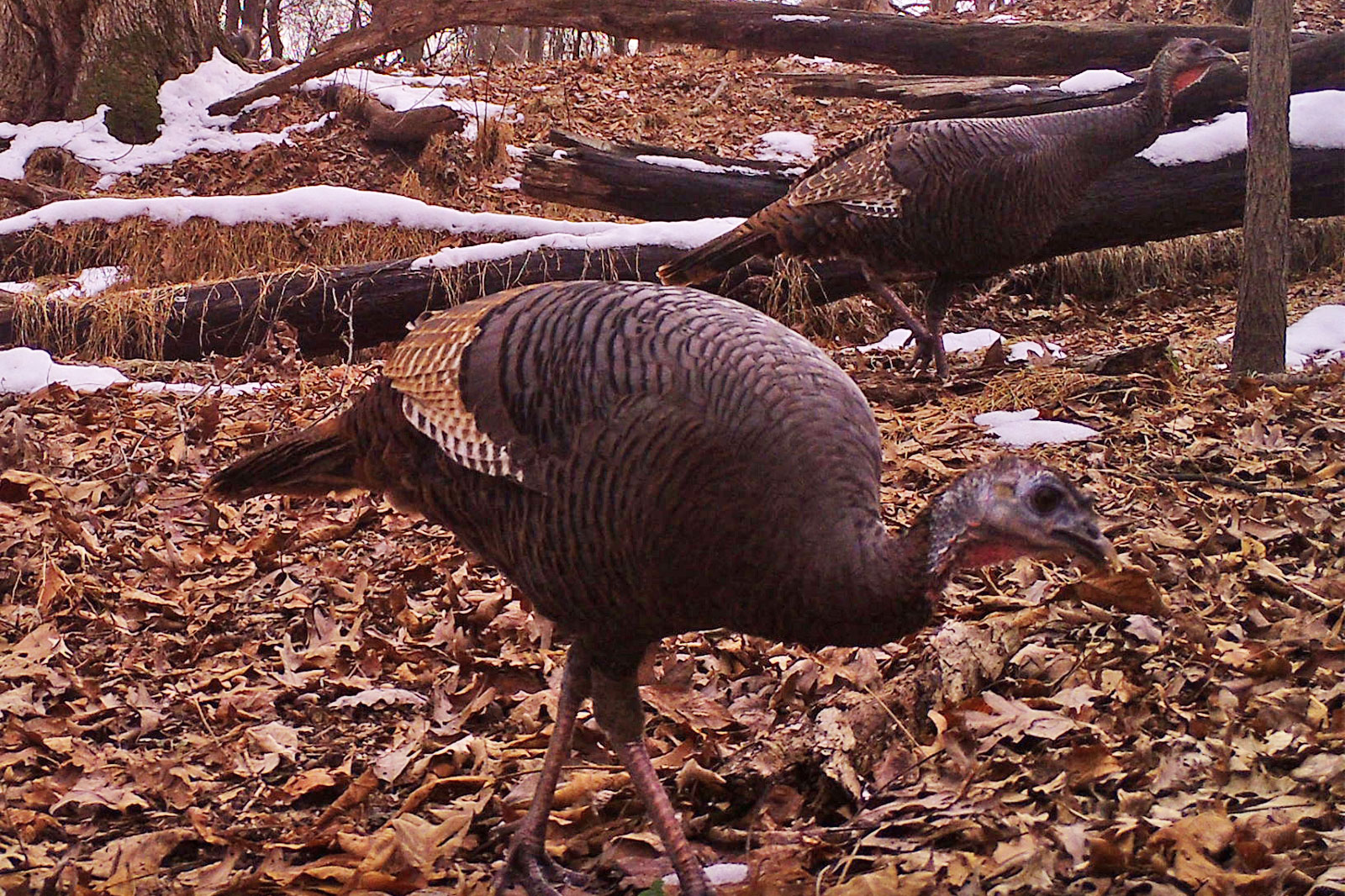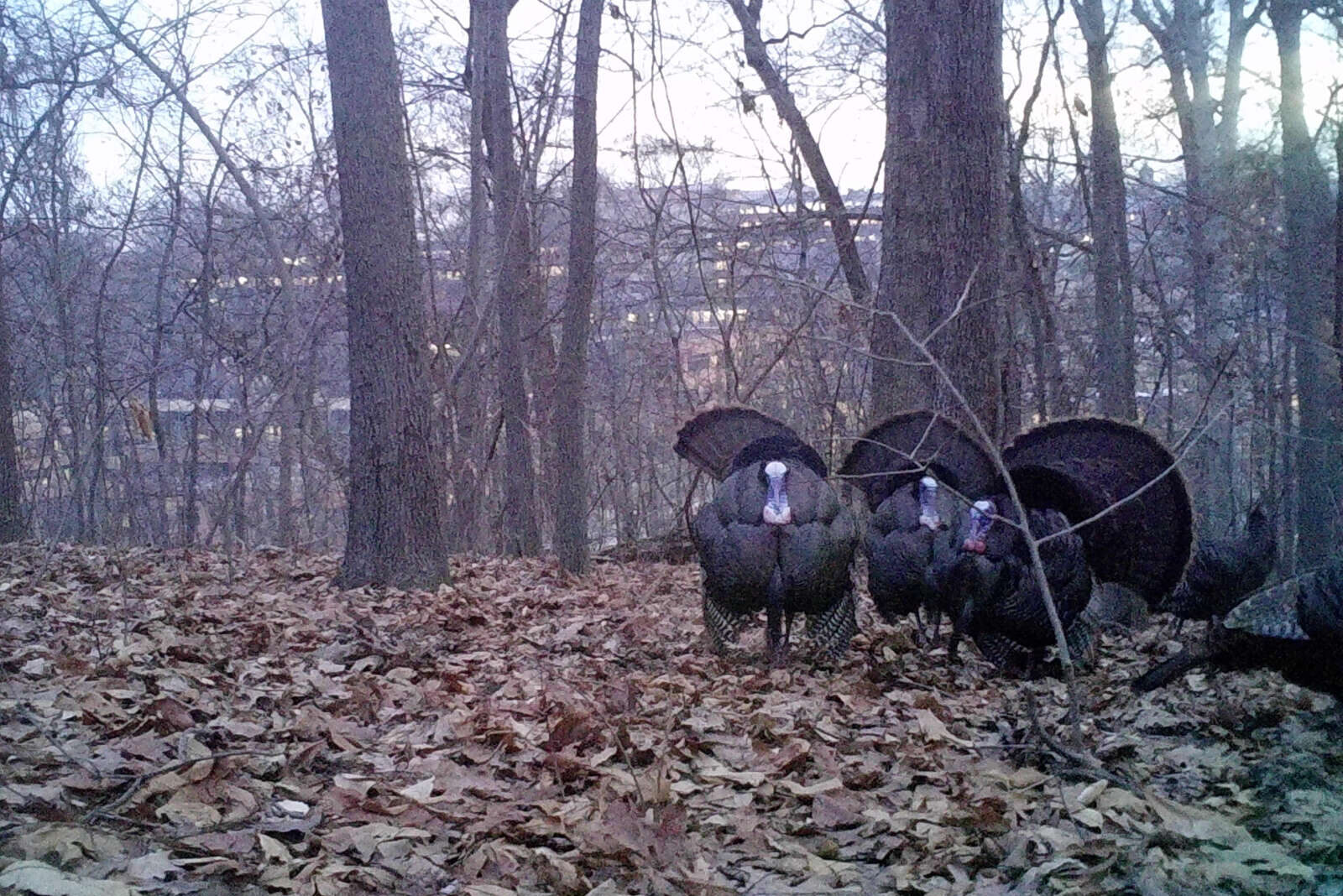After essentially going extinct regionally in the early 1990s, wild turkeys are gobbling up the local limelight again.
Due to habitat loss and excessive hunting, turkeys were extirpated, or made regionally extinct, in Virginia by the early 1900s, explains local biologist Merri Collins.
In the mid-1990s, scientists began importing one species, Eastern Wild Turkeys, from other parts of the U.S. to restart the population in the D.C. area. After three decades, the population has returned, not just in Virginia, but across several eastern states and regions — notably in Boston and Staten Island — leading some wildlife experts to call this “one of the largest conservation success stories in American history.”
“Now there are enough turkeys that they are starting to move into urban and suburban areas with suitable woodland and meadow habitats,” says Collins, a Penrose resident earning her doctorate degree at the University of Maryland Urban Nature Lab.
Based on social media posts, Arlingtonians seem to be seeing more turkey around. One was spotted in Penrose within the last week, while others were seen north of Ballston — near the renovated wetland area — to the East Falls Church area in the last two months. A few years back, a turkey was rescued from a Rosslyn construction site.
“Seeing animals around again that were once absent from the landscape means we are doing something right,” she said. “Our green spaces, like parks, are plentiful enough and have healthy enough habitat to support more wildlife diversity.”
Collins uses trail cameras to study turkeys and says anyone who uses these cameras can see large flocks as well as baby turkeys, called poults, and observe their “pretty cool” behaviors.
Not everyone is pleased, however.
“Wild turkeys are a scourge,” wrote one Arlingtonian on Nextdoor. “Do not feed or encourage them. Call the county and see if we can stop them proliferating.”
Other commenters jokingly saw these thoroughly urbanized birds as a potential dinner.
Novelty or nuisance, today, the turkey population in Virginia today numbers 180,000, according to a fact sheet from the Virginia Dept. of Wildlife Resources, which regulates bi-annual hunting seasons for the bird.
“Turkeys in cities sometimes get a bad rep, but also can provide people with some serious laughs,” Collins said, suggesting people to Google “turkeys in cities for some light-hearted reading.”
One turkey, for instance, got a reputation by allegedly attacking a few trail users in Prince George’s County, Maryland. There are other stories of the birds attacking people in Michigan, creating havoc in New Hampshire and, no joke, knocking on doors for food in New York.
To avoid confrontations like that, Collins says, give turkeys the space to “be turkeys.”
“Like with all wildlife, do not chase, approach, or try to touch turkeys,” she said. “If you want to take photos, great! Do it from a distance.”
They do provide some benefits to people, too, because they eat pesky insects and spread the seeds of native plants.
While she has a soft spot for turkeys, Collins notes that D.C. and its surrounding suburbs are home to other interesting animals, including red foxes, coyotes, mink, river otters, owls, hawks, several species of turtles and lizards.
“You may not see them, as many species tend to move around at night, but they are here,” she said.
“You can make your own property friendly to wildlife by planting native plants,” Collins added. “There are a ton of online resources to help people do this and have wildlife friendly yards in cities.”
Vernon Miles contributed a pun to this report


